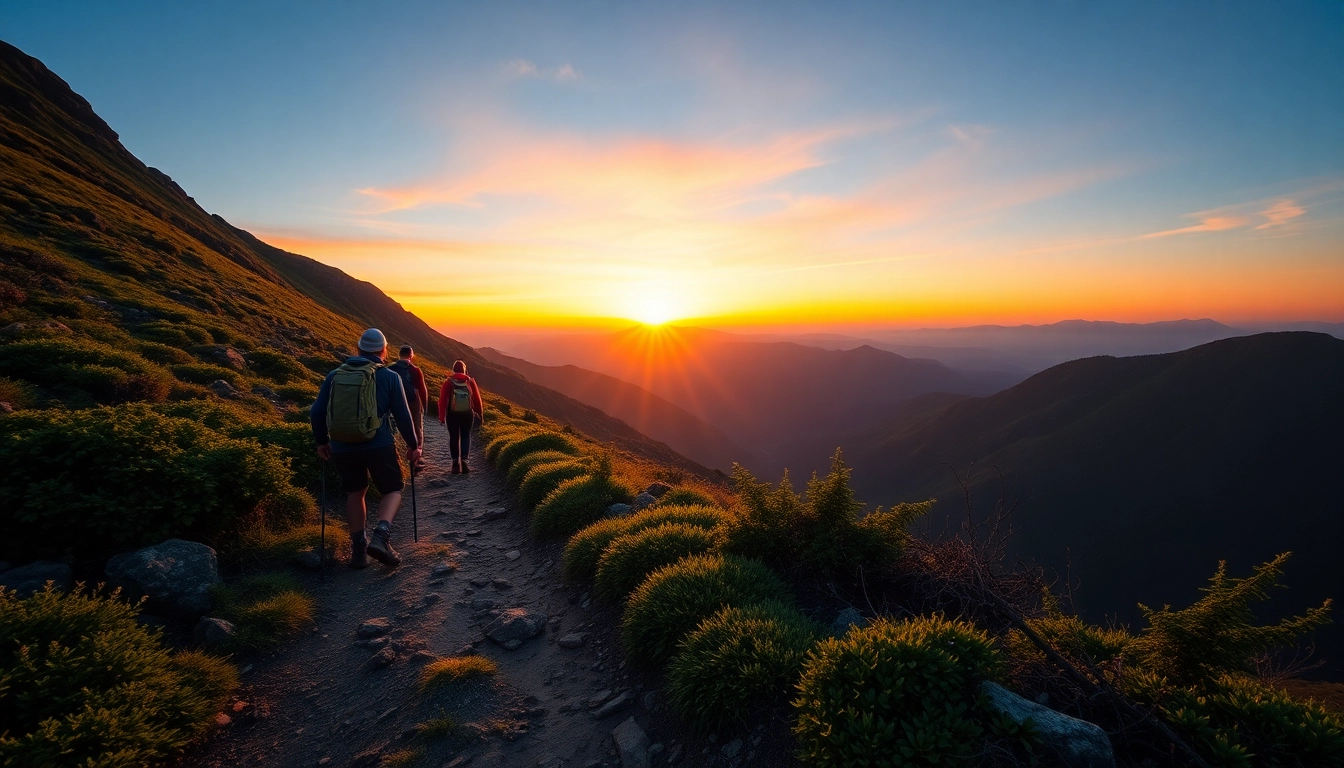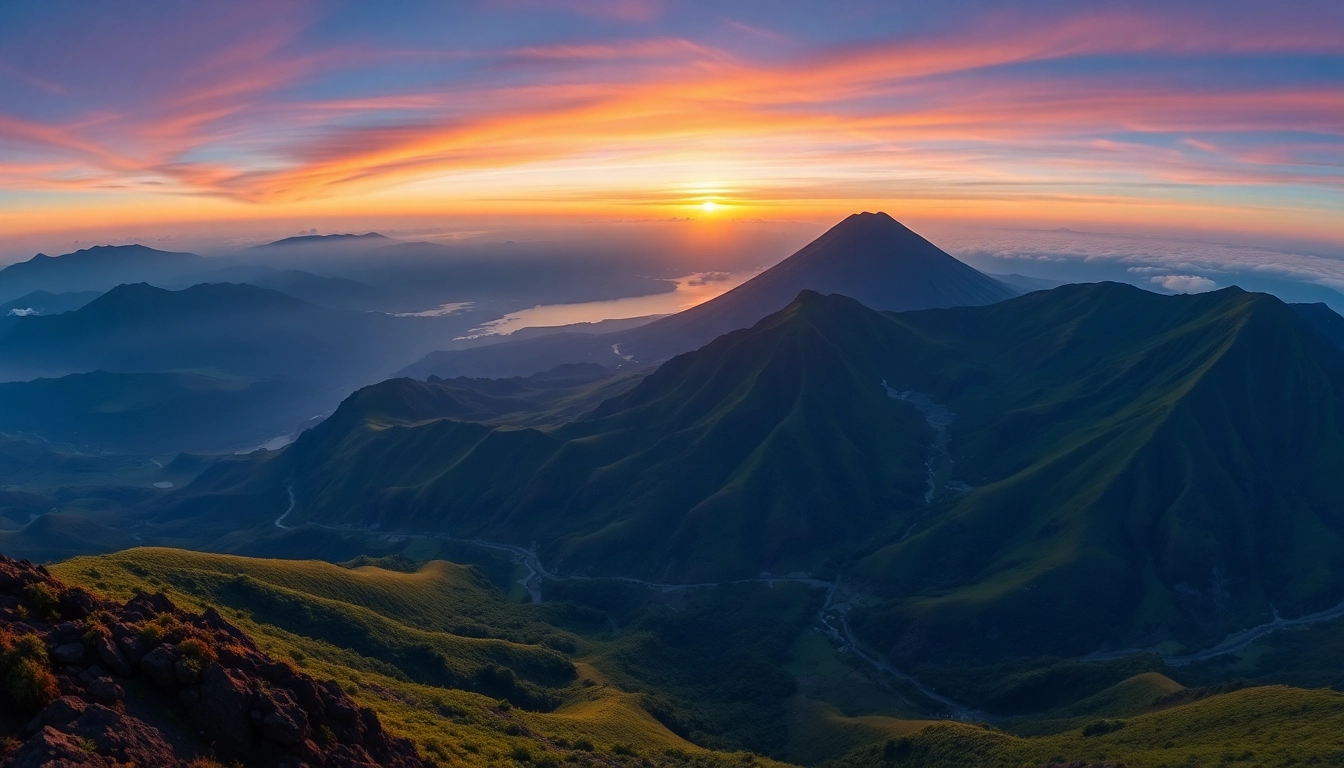Introduction to Hiking in Indonesia: Discover Nature’s Trails
Indonesia, renowned for its rich biodiversity and stunning landscapes, offers a diverse array of hiking opportunities for nature enthusiasts and adventure seekers alike. From lush rainforests and cascading waterfalls to towering mountains and serene coastal trails, the country’s terrain is a haven for outdoor exploration. Whether you are a seasoned hiker or a beginner looking to immerse yourself in nature, understanding the unique appeal of hiking in Indonesia is essential for a safe and enjoyable experience.
Hiking in Indonesia not only provides physical and mental health benefits but also offers a chance to connect deeply with local cultures and ecosystems. As the activity gains popularity, more travelers are seeking authentic, sustainable, and responsible ways to explore the hidden gems of this archipelago. In this comprehensive guide, we will delve into the essence of hiking in Indonesia, highlight top destinations like Lombok, discuss essential gear and preparation, and share expert tips to enhance your journey.
To begin your adventure, it’s important to understand what makes hiking in Indonesia exceptional. The country’s varied topography presents a canvas for all skill levels, from gentle coastal walks to challenging mountain ascents. Moreover, Indonesia’s climate, seasonal variations, and local customs influence planning, safety, and environmental conservation efforts, which we will explore in detail.
For more information on choosing the right activities and planning your trip, visit hiking in Indonesia—a keyword that embodies the spirit of adventure, discovery, and connection with nature that this region offers.
Understanding the Appeal of Hiking in Indonesian Landscapes
Indonesia’s diverse landscapes create an irresistible allure for hikers. The country’s geography spans volcanic mountain ranges, tropical rainforests, fertile volcanic soil, and pristine beaches, providing an endless variety of trails that cater to different interests and fitness levels.
One of the primary attractions is Indonesia’s volcanism—over 120 active volcanoes, including Mount Rinjani in Lombok, offer dramatic terrains for challenging climbs and breathtaking panoramic views. Exploring these volcanic sites affords visitors unique geological insights and the opportunity to witness dynamic natural phenomena such as geothermal activity and crater lakes.
Beyond volcanic mountains, Indonesia’s rainforests, such as those in Tanjung Puting or Gunung Leuser National Park, are teeming with wildlife and flora. Hikers often embark on jungle treks to observe orangutans, gibbons, and a myriad of bird species, immersing themselves in pristine ecosystems that are vital for global biodiversity.
Coastal trails along Bali’s beaches, Raja Ampat’s islands, and Lombok’s Gilis are equally captivating, offering serene walking experiences amid turquoise waters and coral reefs. These routes allow hikers to unwind while appreciating Indonesia’s natural beauty from a different perspective.
In addition to natural scenery, hiking in Indonesia provides cultural encounters. Trails often pass through villages, rice terraces, and sacred sites, enabling hikers to experience local traditions and hospitality firsthand. This cultural dimension adds depth and meaning to outdoor adventures, transforming mere walks into immersive journeys.
Furthermore, hiking serves as a pathway for personal growth—challenging terrains test endurance, resilience, and planning skills, fostering a sense of achievement and self-awareness. The appeal lies not just in the vistas but in the holistic experience that combines adventure, culture, and environmental appreciation.
Popular Hiking Destinations Across Lombok and Beyond
Mount Rinjani – Lombok’s Crown Jewel
Mount Rinjani, Indonesia’s second-highest volcano, stands at 3,726 meters above sea level and is a magnet for serious trekkers. The Rinjani trek typically spans 3 to 4 days, covering diverse terrains—including volcanic craters, hot springs, waterfalls, and lush forests. Trekkers are rewarded with sunrise views over the crater lake, Segara Anak, and the entire island of Lombok.
Proper acclimatization, physical preparedness, and local guides are essential for a safe ascent. Rinjani’s terrain is demanding, with steep slopes and unpredictable weather, demanding careful planning and respect for nature’s power.
Gunung Tambora and Other Volcanoes
Historically significant, Mount Tambora’s eruption in 1815 reshaped regional geography and climate. Today, it offers adventurous trails through its caldera, with surreal landscapes and archaeological sites. Trekking here combines exploration of volcanic history with physical challenge and awe-inspiring scenery.
Bali’s Sacred Mountains and Coastal Trails
Mount Batur, an active volcano, is popular for sunrise hikes accessible to many beginners. Its relatively moderate ascent offers spectacular views of the caldera lake and surrounding rice paddies. Bali also features coastal trails in places like Sekumpul Waterfalls and the coral reefs of Menjangan Island, combining lush jungle hikes with marine encounters.
The Komodo Islands and Rinca Island
While widely known for Komodo dragons, these islands also offer hiking opportunities where visitors can explore rugged terrains, mangroves, and unspoiled beaches. The trails are ideal for wildlife enthusiasts and those wanting to combine land and sea adventures.
Sulawesi’s Mountainous Terrain
Mount Sesean and other highland trails provide challenging hikes amid lush forests and remote villages, offering insights into indigenous cultures and pristine environments rarely touched by mass tourism.
Essential Gear and Preparation for Indonesian Hikes
Choosing the Right Equipment
Proper hiking gear is vital for safety, comfort, and enjoyment. In Indonesia’s tropical climate, lightweight, breathable clothing is recommended, along with UV-protective hats, sunglasses, and moisture-wicking fabrics. Durable hiking shoes or boots with good traction are indispensable—see resources on hiking boots for selection tips.
Other essential equipment includes a comfortable backpack, trekking poles for stability on challenging terrains, and waterproof gear to adapt to sudden rain showers. A basic first aid kit, insect repellent, and sunblock should always accompany your kit.
Preparatory Steps
Physical conditioning is crucial, especially for high-altitude or rugged trails. Engage in regular cardio, strength training, and flexibility exercises weeks before your hike. For beginners, gradual hikes and outdoor practice help build stamina and confidence.
Mapping your route and understanding trail difficulty levels allow better planning. Many trails require permits or reservation, so research local regulations and acquire permits ahead of time—particularly for popular sites like Mount Rinjani.
Weather plays a significant role in hiking safety in Indonesia. The dry season (May to September) offers clearer skies and less rain, ideal for trekking. The wet season (October to April) demands extra caution due to slippery trails and potential flooding. Always check local weather forecasts before setting out.
Local Guides and Permits
Employing certified local guides enhances safety, provides cultural insights, and supports local economies. Guides are familiar with terrain nuances, weather patterns, and emergency procedures. For protected areas, securing necessary permits is mandatory; ensure you comply with regulations to preserve environmental integrity.
Hiking Techniques and Tips for Safety
Proper Trekking Techniques and Pacing
Maintaining a steady, sustainable pace is vital for long hikes, particularly in challenging terrains. Break the journey into manageable segments, take regular rest intervals, and avoid overexertion. Use trekking poles to reduce knee strain and improve balance on uneven surfaces.
When ascending steep inclines, lean forward slightly, shorten steps, and keep your center of gravity low. Descents require controlled steps to prevent falls. Practice proper breathing techniques to enhance endurance.
Navigation Skills and Tools
Proficiency with maps, compasses, and GPS devices is essential. Download offline maps and apps tailored for hiking in Indonesia, and always carry a physical map as backup. Recognize trail markers and landmarks to prevent disorientation. Learning basic navigation reduces dependence on technology, especially in remote areas with poor signal.
Preparing for Terrain and Weather Changes
Variable terrain demands flexibility—rocky paths, muddy slopes, dense forests, and volcanic ash can appear without warning. Wearing layered clothing allows adaptation to temperature shifts. Carry rain gear and extra clothing to stay dry and warm. Tracking weather updates and knowing emergency procedures are critical for safety.
Environmental Responsibility and Conservation
Practicing Leave No Trace Principles
Protectting Indonesia’s natural beauty involves minimal-impact practices. Carry all trash out, avoid disturbing wildlife, and refrain from collecting plants or artifacts. Stick to established trails to prevent habitat damage and soil erosion.
Respecting Local Customs and Wildlife
Engage with local communities respectfully—learn about their traditions and seek permission before taking photographs or entering sacred sites. Educate yourself on species that are protected or endangered, such as orangutans and turtles, and observe them from a respectful distance.
Supporting Eco-Friendly Tourism
Choose eco-certified guides and accommodations that prioritize sustainability. Contribute to conservation projects and local economies by purchasing locally made products and participating in responsible tourism initiatives. This ensures the preservation of Indonesia’s unique environments for future generations.
Enhancing Your Hiking Experience: Tips for Beginners and Experts
Healthy Habits and Physical Preparation
Maintaining overall health is fundamental. Regular aerobic exercises, strength training, and flexibility routines prepare your body for prolonged walking. Proper nutrition, hydration, and adequate sleep before hikes improve performance and recovery.
Photography and Capturing Scenic Moments
Immortalize breathtaking views with a good camera or smartphone. Use protective gear against dust and moisture, and learn composition techniques to enhance your photos. Capture the flora, fauna, and cultural elements along your trail for lasting memories and sharing inspiration.
Community and Social Aspects
Hiking is also a social activity that promotes community bonding. Join local hiking clubs, participate in group treks, or engage with online forums dedicated to Indonesian outdoor adventures. Sharing experiences fosters encouragement, safety awareness, and cultural exchange.

